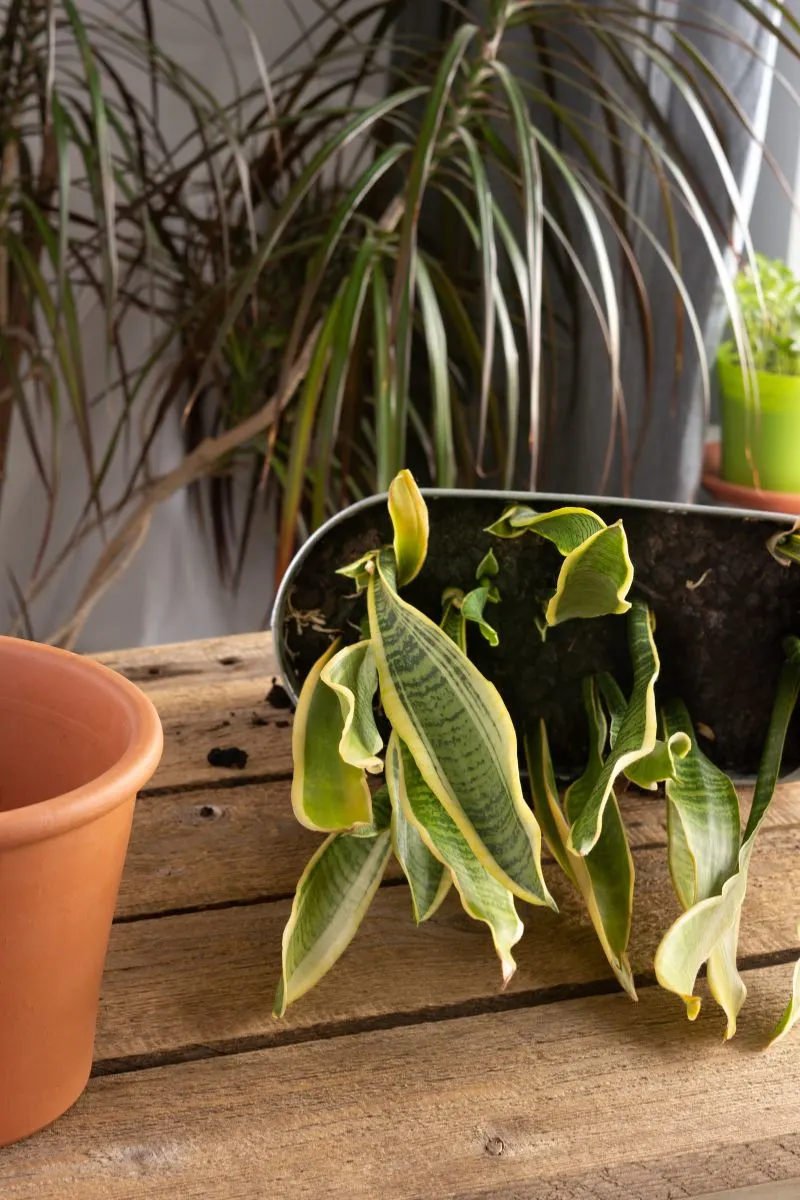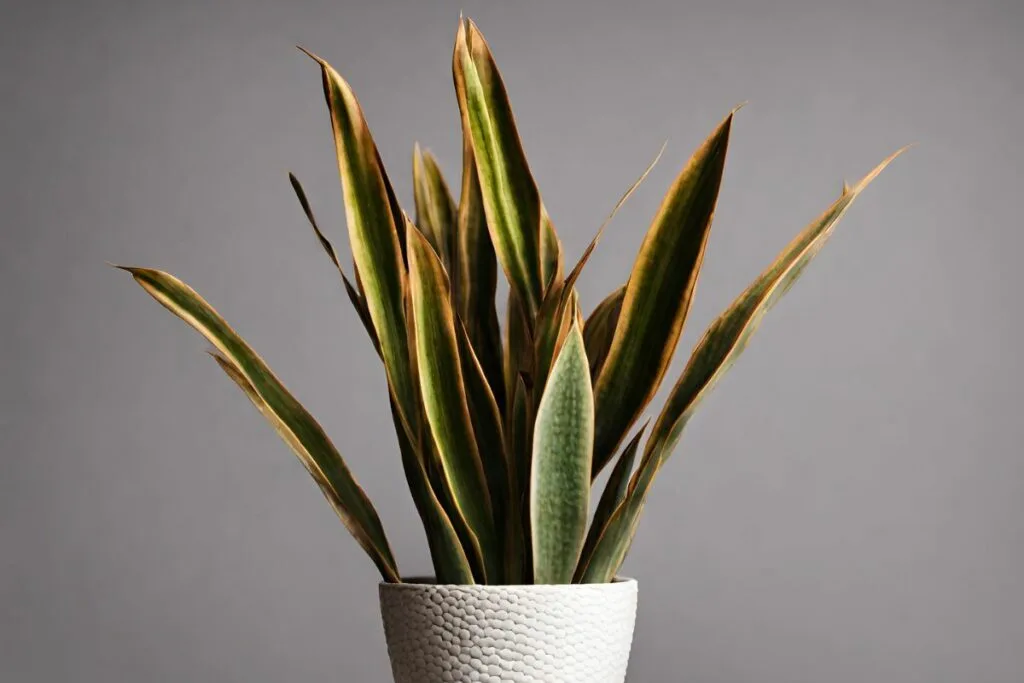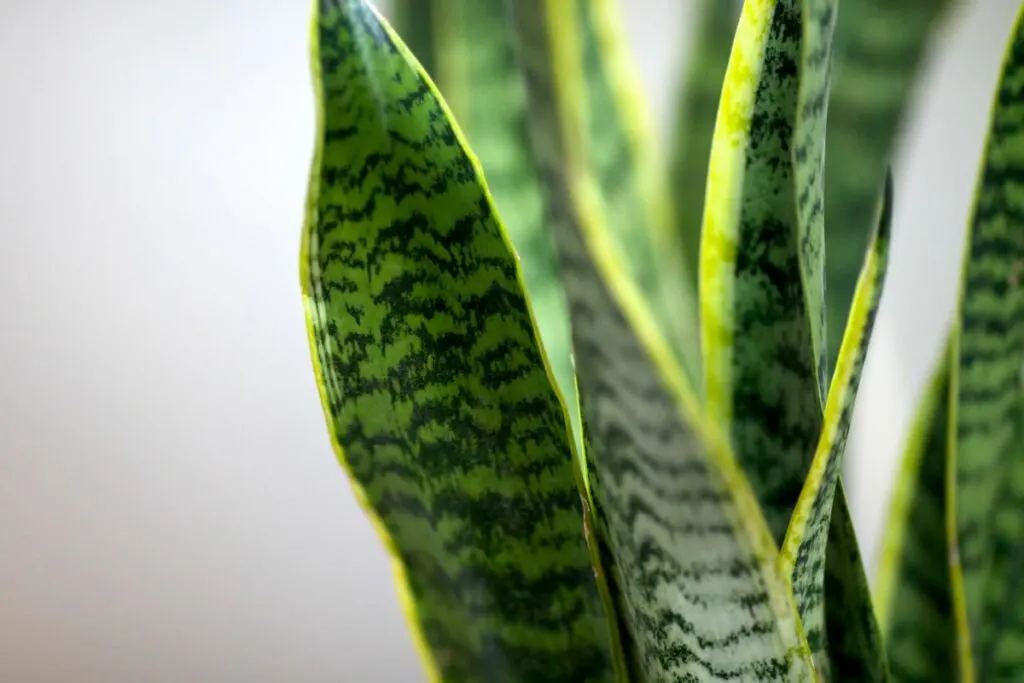Worried about your snake plant losing color? Learn the reasons behind and solutions for snake plant fading to bring back their natural beauty!
Snake Plants, Dracaena trifasciata, formerly known as Sansevieria trifasciata, are super popular for indoor gardening.
Its long, colorful foliage and low maintenance make it a top choice for beginner and novice horticulturists alike.
Yet, despite having a reputation for being hardy and tough-as-nails, this robust plant can still be susceptible to a handful of issues.
A common problem is when the colors on a snake plant suddenly appear to be fading.
Why does this happen, and what can you do about snake plant losing color? Let’s find out!

7 Reasons Why Your Snake Plant Is Losing Color
If the colors on your snake plant are starting to fade, here are the seven most common reasons why this might happen:
1. Too Much Direct Light
Snake plant leaves can lose their color because they’re getting more direct sunlight than they can handle.
This intense heat and direct light is literally bleaching the leaves. Thus, they begin to lose their ability to produce those vibrant green and light yellow colors they’re known for, and instead acquire a washed-out appearance.
The quickest way to solve this problem is to move your plant away from direct sunlight.
You should note that this move won’t turn the leaves back to their original color. However, it’ll definitely stop any additional fading from taking place.

2. Overwatering
Watering too much at once or too frequently can leave your snake plant pale with signs of discoloration.
This is often the combination of inadequate draining and compacted soil that retains too much moisture.
The result is the roots are unable to receive the nutrients they need for the leaves to grow and thrive. Thus, they turn a sickly shade of yellow.
Overwatering is also a direct cause of root rot, which is a fungal disease that can spread quickly.
If you suspect root rot, I recommend letting the soil dry out completely. Then, clip away any affected roots to stop the disease from spreading.
3. Southern Blight
Watch out for Southern Blight, a tricky fungal infection that loves overwatered soil.
Known to some as southern root rot or southern wilt, this fungus (Sclerotium rolfsii) is a fan of hot, humid weather.
It thrives in soggy soil conditions, bringing trouble to your plant.
When these factors come together, they generate white-colored patches that spread over most of the leaves. This causes the leaves to become mushy, swollen, then fall off.
If the infection is still pretty small, you can prune the affected leaves with sterilized shears and treat the rest of the plant with a fungicide to stop the spread.
On the other hand, if the infection is severe, there’s not much you can do to save the plant. The only thing you can do is protect your other healthy plants.
In this case, the best thing you can do is remove the infected plant to discourage the fungus from spreading to neighboring plants.
Place it in a plastic bag, close it off tightly, and dispose of it in a safe place.

4. Nutrient Deficiency
Another possible reason for the snake plant losing its color is that your household plant isn’t getting the nutrients and minerals—mainly potassium—it needs to thrive.
To help revive your snake plant, add a couple of drops of houseplant fertilizer to a jug of water. Stir well to mix and then pour directly into the soil.
Make sure you don’t get any fertilizer on the stems or leaves. Repeat this process twice a year, once at the start of spring and again at the end of summer.
This will give your plant the boost it needs without risking fertilizer burn.
5. Temperature Fluctuations
Snake plants are hardy and can easily adapt to their surrounding conditions.
They thrive more in temperatures between 85 degrees Fahrenheit and 55 degrees Fahrenheit. However, anything higher than 85 or lower than 55 can cause it to go into shock.
Even sudden changes in temperatures can be extremely stressful for snake plants. In turn, it can cause their bright colors to fade and become a pale, sickly shade.
Avoid placing your snake plant next to these:
- Drafty windows and doorways
- Fireplaces
- Heating vents
- Air conditioners
- Fridges, ovens, and other appliances that give off heat
6. Overfertilizing in the Winter
Despite being sturdy succulents, snake plants are quite sensitive when it comes to fertilizer, especially during the colder months.
When their soil has an increased concentration of nutrients, the risk of fertilizer burn increases. As a result, they begin manifesting pale yellow patches on their leaves.
Here is how to solve the problem:
- Add fertilizer only during the warm months to prevent your snake plant from being overfed.
- Starting in late March, fertilize once, then again a second time in early September.
- Always dilute the fertilizer to half the recommended strength.

7. Pests
If your plant appears to be losing color, try looking at the underside of the leaves. You may notice any mealybugs that look like small white cotton-like flecks.
These pests rob the plant of its nutrients. Thus, they slowly become weak, wilting, and void of color.
Spider mites are another potential hazard. They often appear as brownish-red dots under the leaves of snake plants.
They weave ultra-fine web-like strands over the lower sides of the leaves.
This makes it difficult for the leaves to produce food via photosynthesis, forcing them to turn paler and lose their color.
If your snake plant is suffering from a pest infestation, here is how to deal with it:
- Quarantine it to protect other plants.
- Wipe each leaf with a cotton swab soaked in rubbing alcohol.
- Spray the leaves with a homemade mixture of one pint of water and two teaspoons of dish soap.
- You can also use something more potent, such as insecticidal soap or neem oil.
Before you go…
Snake plants are beautiful household plants with unique color patterns and striations.
They’re best known for their bright yellow and light green stripes on a backdrop of dark, vivid green.
Unfortunately, certain factors can stress the plants, forcing them to lose their colors.
Using this guide, you now know what these factors are and what you can do to help prevent this from happening again.
For more information on snake plants and other household plants, download my free printable houseplant quickstart guide.
Thanks for reading!


Hey there, I’m Morgan, a houseplant enthusiast from sunny Charleston, South Carolina. Growing up surrounded by my mom’s lush orchids and African violets, I discovered the magic of bringing nature indoors. Thanks to the pandemic, I delved deeper into houseplants, discovering their power to uplift moods and transform spaces. I’m here to spill all my secrets, helping you pick the perfect houseplant – and make it happy. Let’s keep your plants alive, together! 😊
